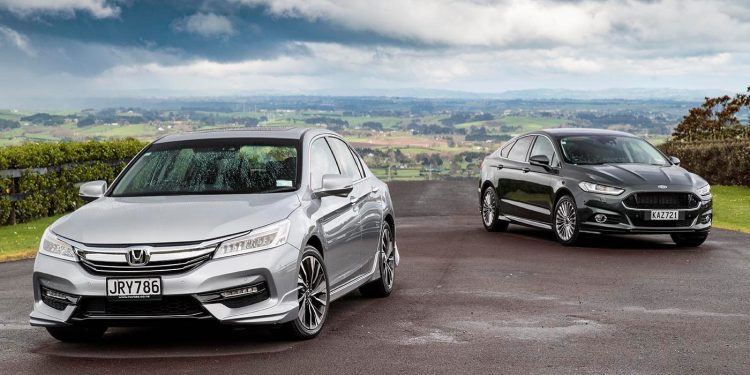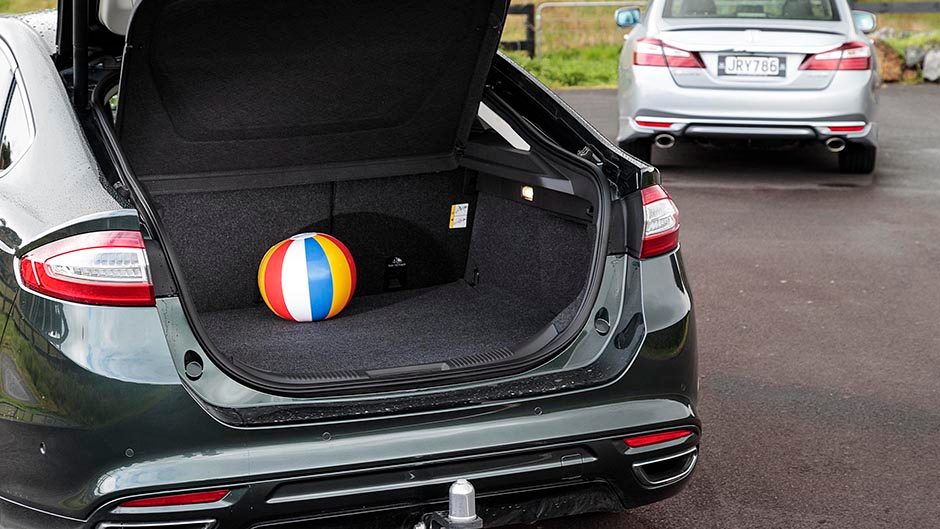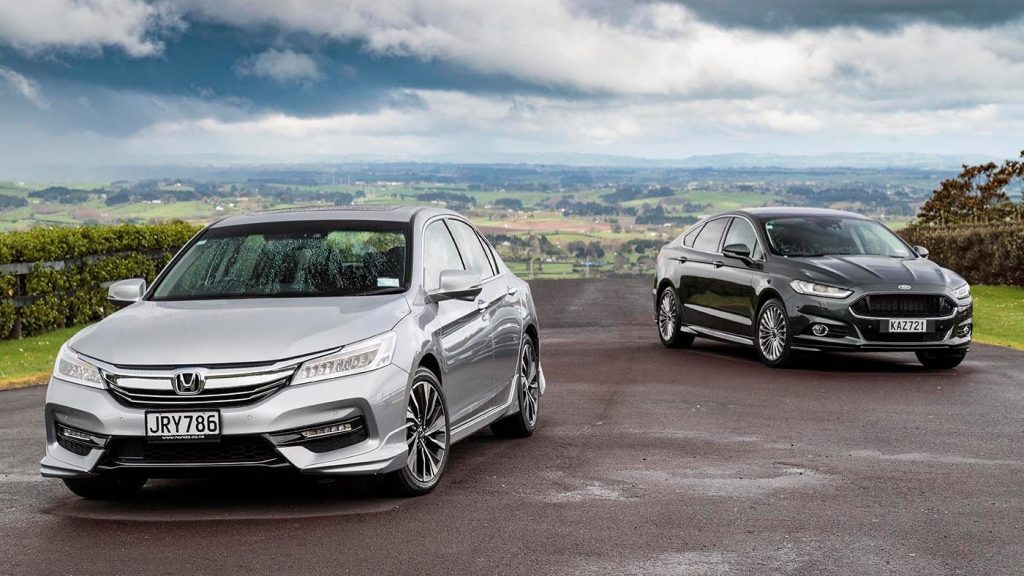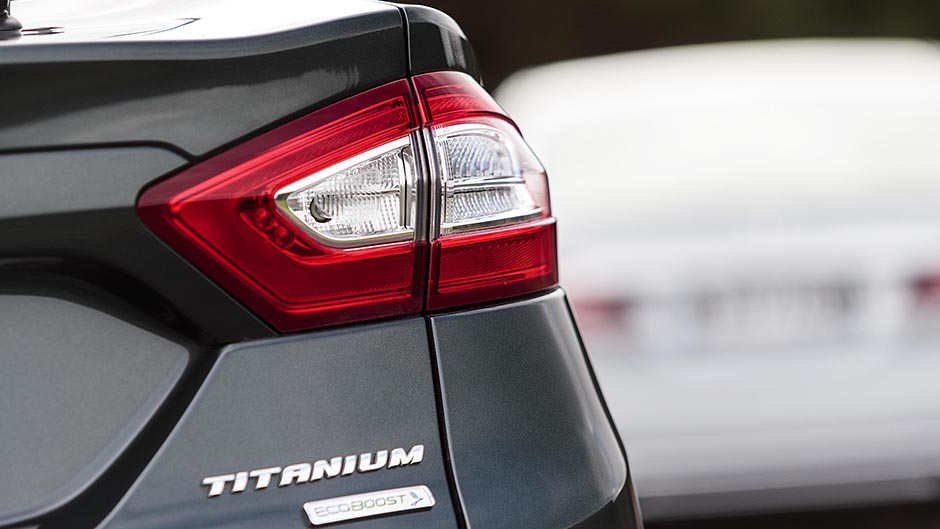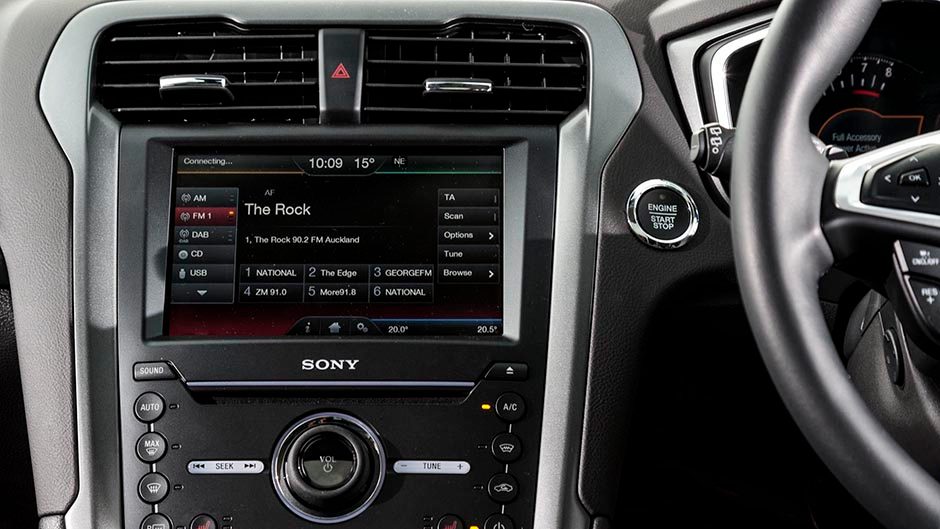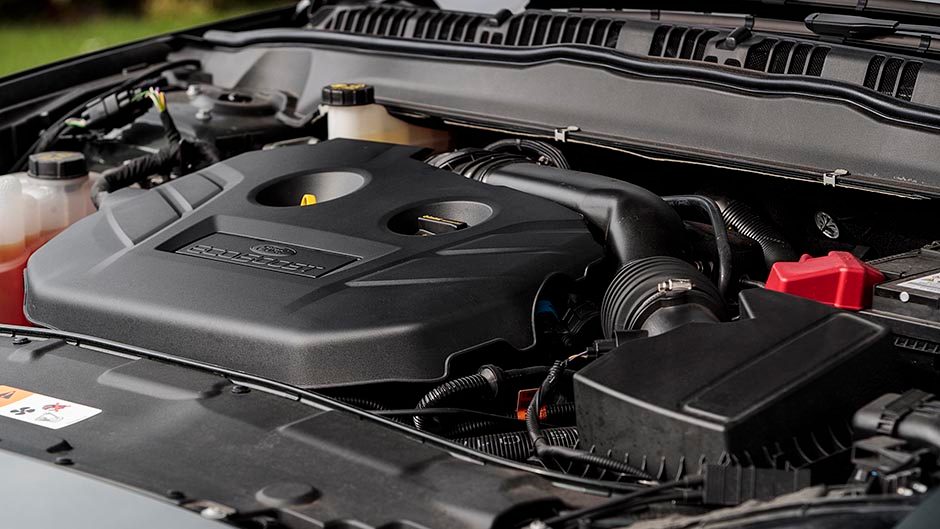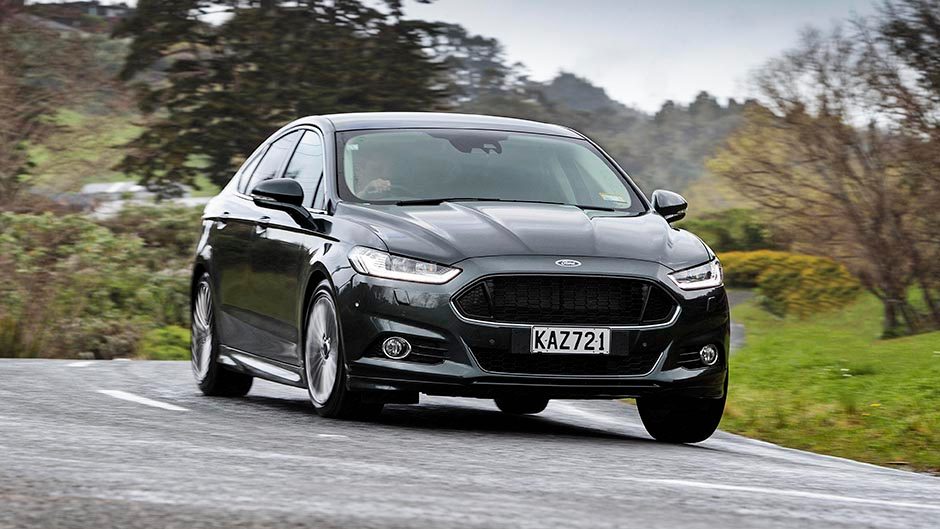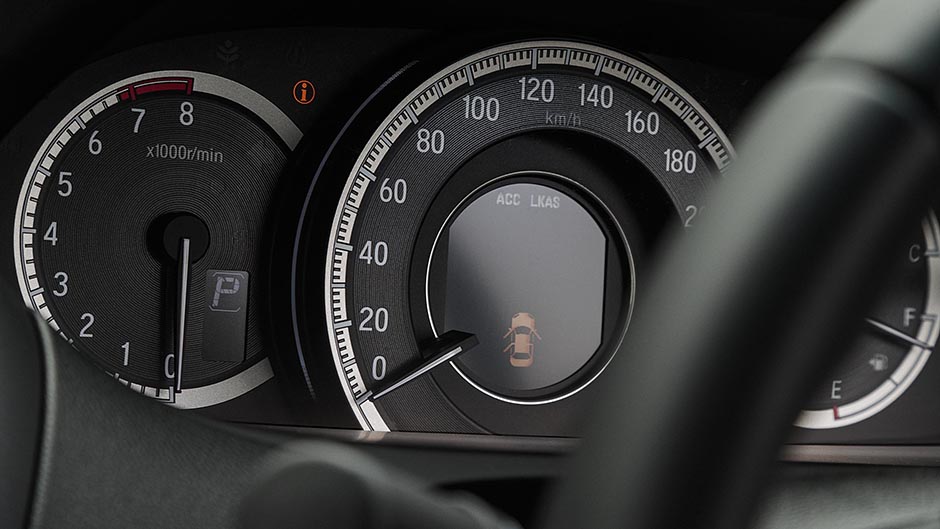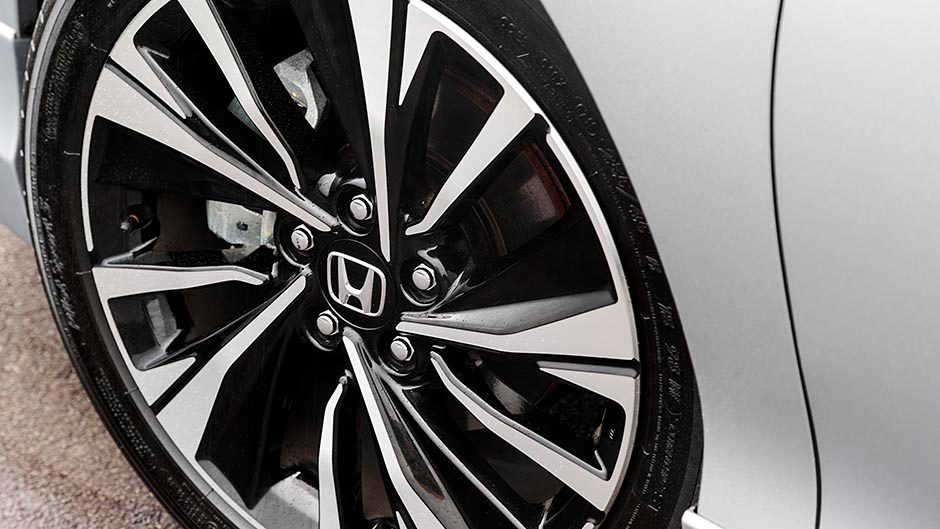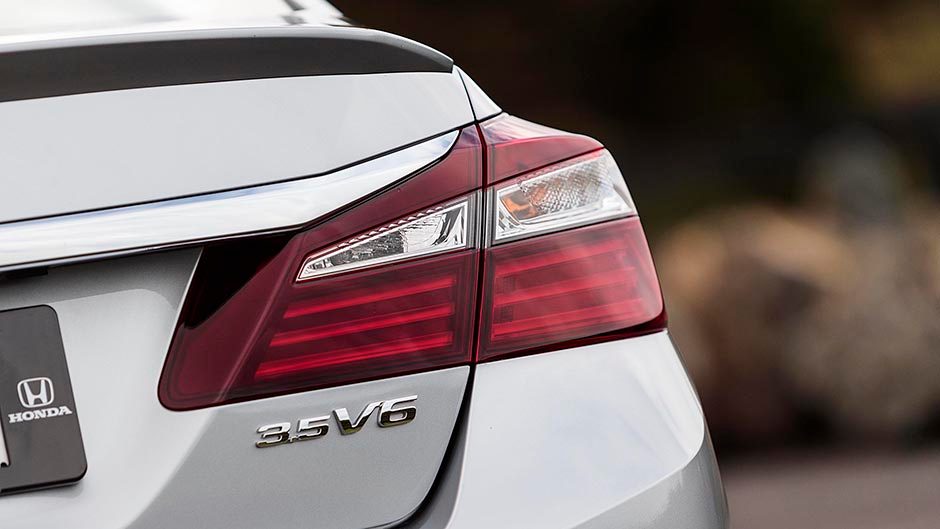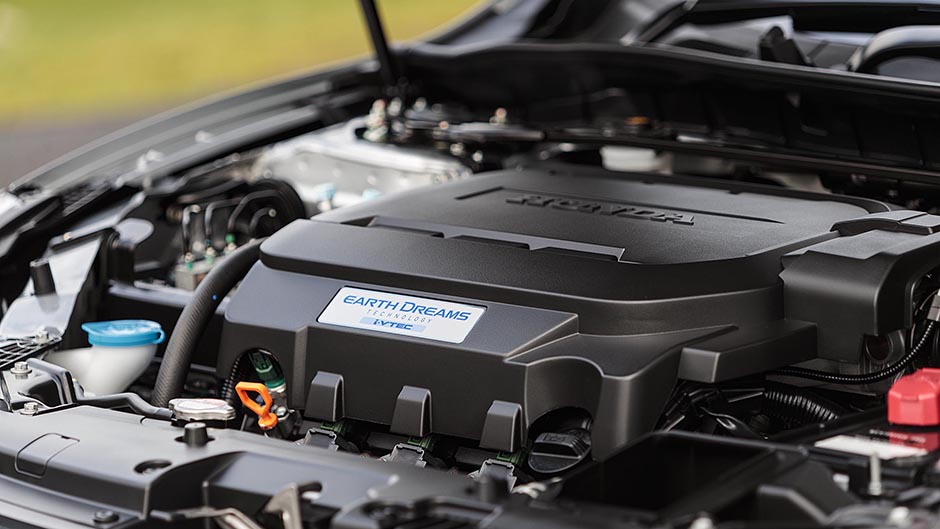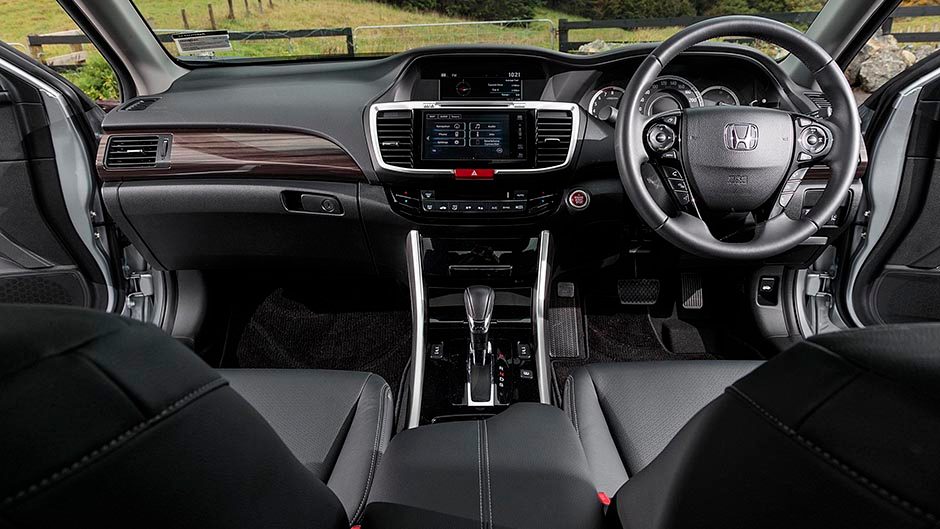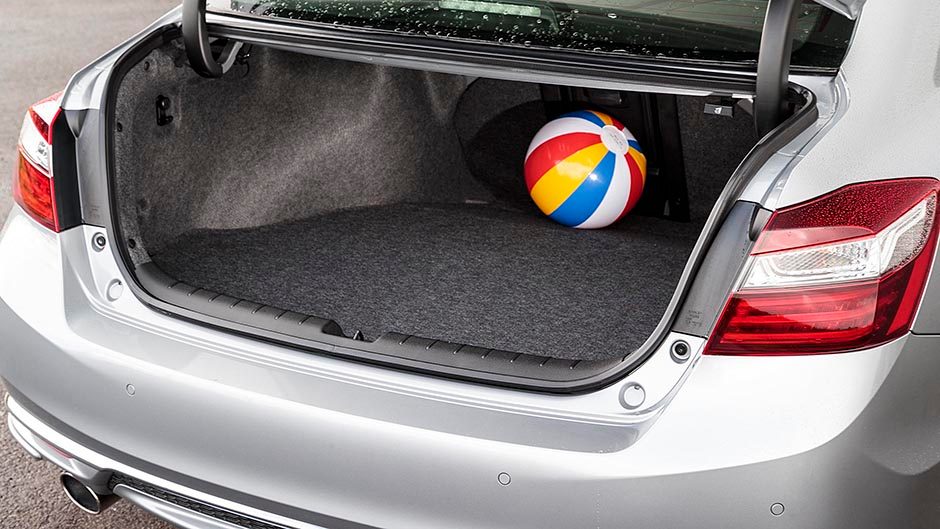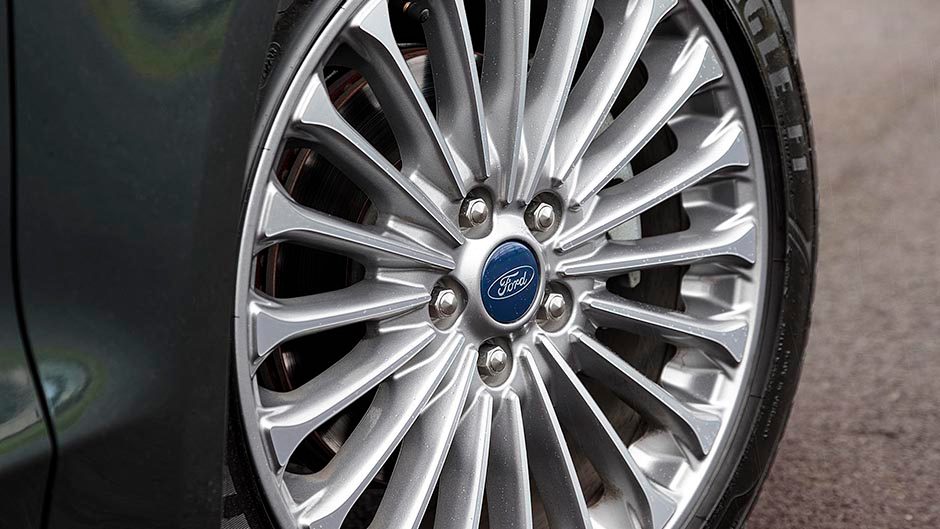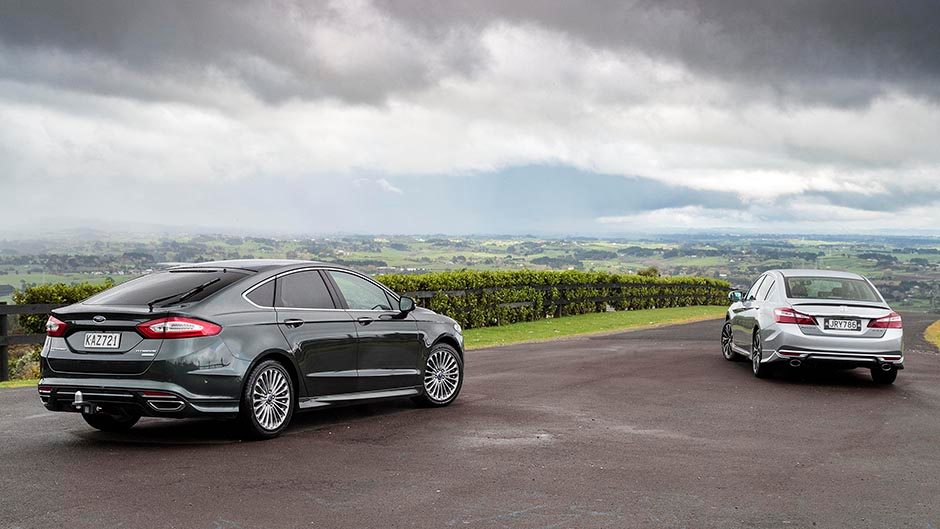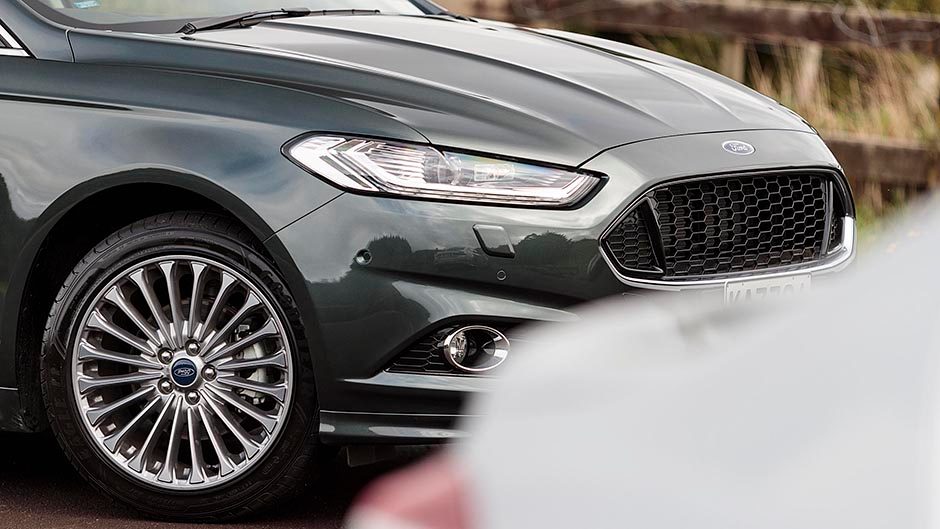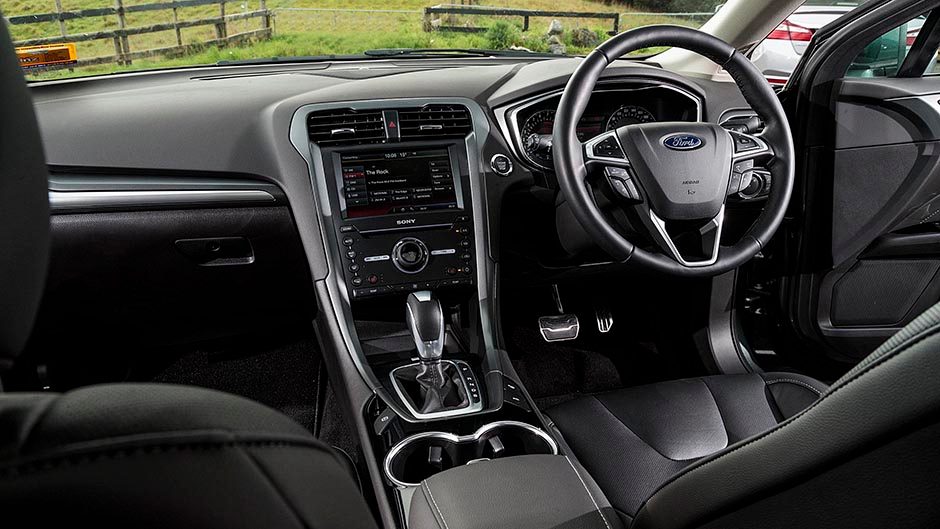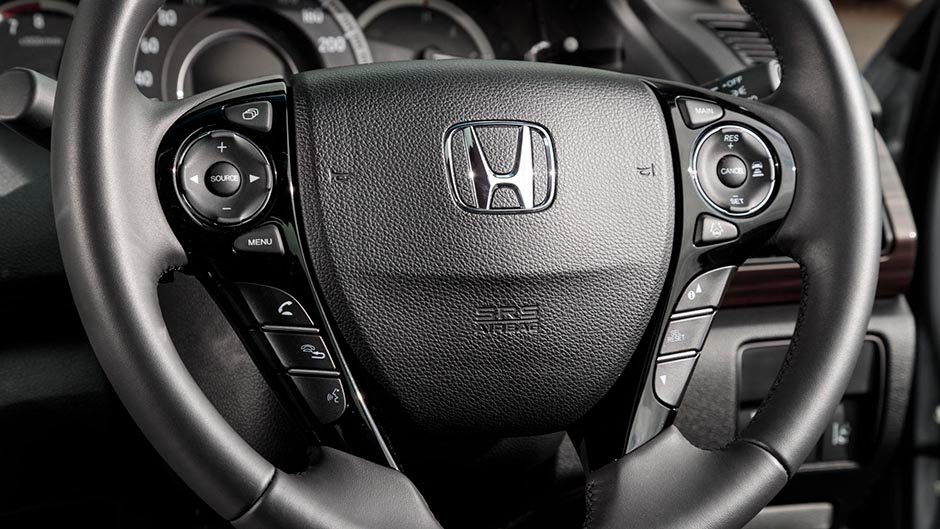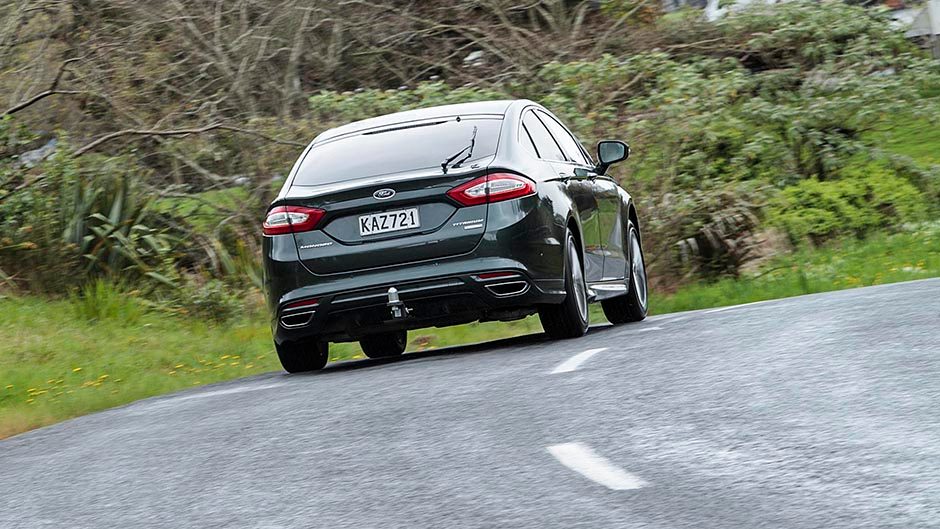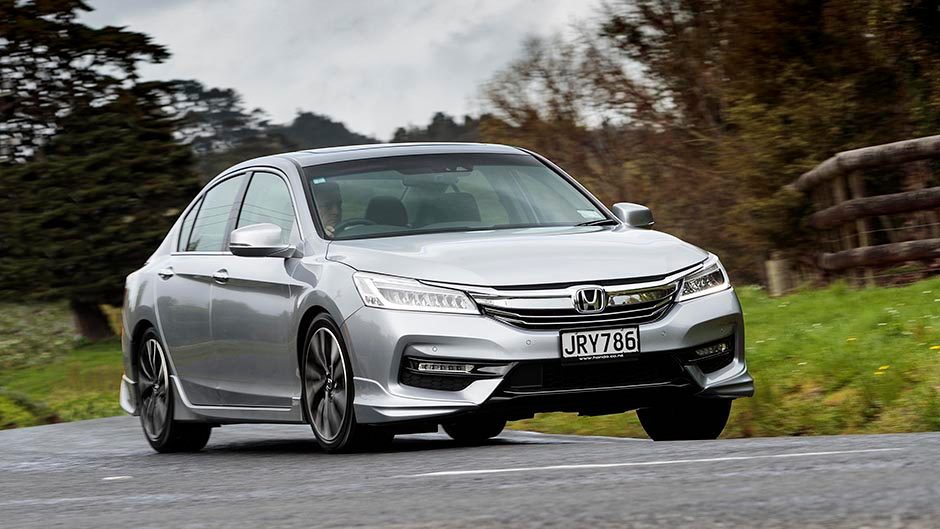2016 Ford Mondeo Titanium vs Honda Accord V6 comparison
Words: Kyle Cassidy | Photos: Tom Gasnier
Not keen to follow the high-riding crowds? Good news, car companies still sell cars, and here we look at the refreshed Accord V6 and Ford’s top Mondeo
I remember a few years ago, okay, maybe 12, we conducted a comparison of large, front-drive V6 models. These were popular back then, making up the bulk of the corporate car park. Fast forward to the now and of the five competitors that day, just one still exists; Maxima, Vectra, and Diamante are all long gone, while the Camry V6 is now the Aurion. The lone survivor, the Honda Accord, can still be had with a V6 engine too. Thank the American market for this; they still like big sedans, and prefer them with larger engines too. Because of this, the current Ford Mondeo was engineered primarily with Americans in mind, Ford USA taking the development lead on the new model, known as the Fusion stateside. This is why the flavour of these cars leans more towards comfort, space, convenience and tech gadgets; it’s what the mass market sedan buying public wants. So how does the restyled Accord go up against the top Mondeo? Let’s find out.
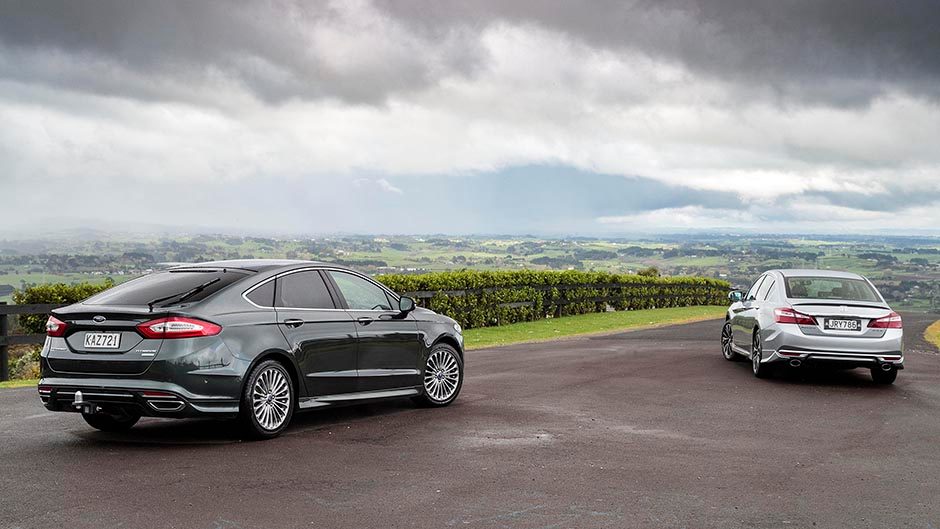
Loaded but pricey
Accord, now sporting the usual revisionary styling, is offered in but one loaded example, the V6 NT. Gone are the previous 2.4-litre versions, though the new larger Civic sedan with turbo power should satisfy that market quite nicely. Mondeo offers three model grades, hatch and wagon body styles and even a diesel. We can’t think of much in the way of specification that either lacks, both packing the full range of safety gadgets, all the convenience features you’d ever need and no option boxes to tick. Factor on collision mitigation, lane keeping assist and active cruise control, powered and heated leather seats, even in the rear of the Ford, rear camera and sensors, smart keys, adaptive LEDs with auto high beams and sunroofs, the Mondeo with a full length panoramic jobbie. The Ford gets a few more gizmos to boot: self parking, blind spot monitoring, a powered tailgate, the programmable MyKey, air bag rear safety belts, an electric handbrake, and a 220V socket in the centre console. Accord has Honda’s lane watch camera that shows what’s in the left blind spot, though misses out on actual blind spot monitoring.
The Accord V6 is $60,000, the top Titanium hatch $53,690, putting the Ford at an immediate value advantage.
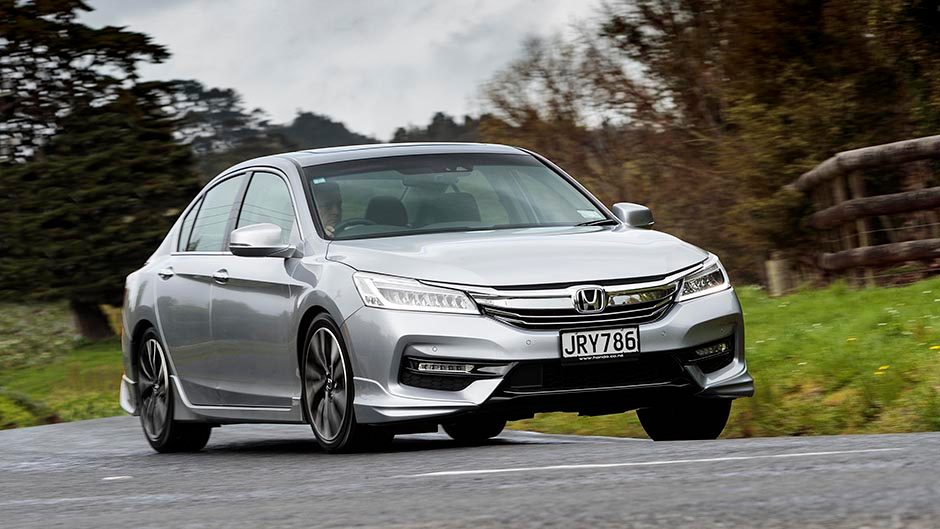
Four versus Six
The Accord sticks with the traditional motivation for the class, a big V6, while the Mondeo embraces forced induction. With the help of a turbo, Ford gets 177kW and 345Nm from 2300-4900rpm from its 2.0-litre engine, while Honda relies on capacity and two extra cylinders to net 206kW and 339Nm at 4900rpm. We preferred the character of the big V6, perhaps because it’s a bit of a novelty these days. It’s smooth, revs nicely and sounds a bit interesting, even if it does drink more than the Mondeo. The Ford engine is a solid performer for its size, if lacking a little character but the low- to mid-range torque impresses and helps curb consumption. Make the most of the low end torque and it will be more economical. The Mondeo is rated at 8.5L/100km on average, the Accord at 9.3, and while the figures will vary according to how you use them, the Ford is usually around a litre per one hundred better off. Overall we averaged in the 10s for the Mondeo, while the Accord was in the high 11s.
Both feel suitably torquey in town, their six-speed autos smooth for unfussed, easy going progress. Pushing on, both like a few revs, especially the V6, which kicks on harder the more the revs pile on whereas the turbo peaks around 5500rpm. The V6 has a noticeably crisper throttle response too, particularly above 4000rpm where the meaty midrange gives over to the power as it spins freely past 6500rpm. It can, however, be a bit much for the front wheels with torque steer evident, but overtaking is done quick smart, and faster than in the Ford. The Mondeo’s front end is soothed thanks to Ford’s tuning of the electric steering, and smarter traction control. Interestingly, to address the power advantage of the Accord and Camry in the US, Ford has moved to introduce a turbo V6-powered Fusion complete with 500Nm and AWD. This would make a great addition to the updated Mondeo range, a new ST model that will certainly outpunch the upcoming, top-spec Holden Commignia.
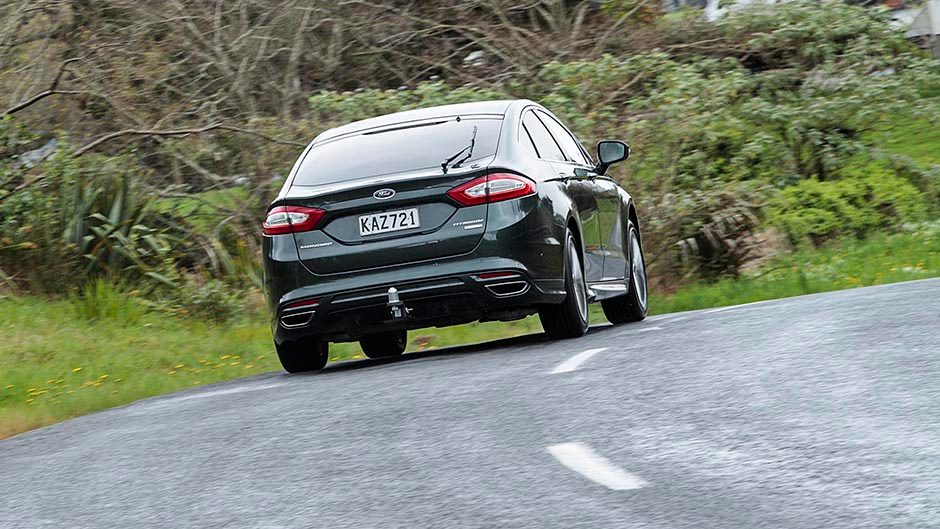
At the wheel
As this class of car is designed primarily for the American market, there’s more of an emphasis on ride refinement than innate driver interactions. Mondeo used to be one of the segment leaders when it came time to hit the curves, but it’s now more of a seven-tenths type of car, capable but no longer overly engaging. So too Accord, favouring ride over keen dynamic ability but in saying that both manage to get through the bends in tidy fashion. The Ford is a more polished effort with better steering, the helm having a more direct nature and consistent assistance whereas the Accord could do with a bit more heft to help guide it through corners more accurately. The Accord is carrying more weight on the front end which brings on understeer sooner, and it lacks the Mondeo’s torque vectoring function which sees the Ford remain on line longer, but it works the brakes hard too; they can get a mite smokey if you’re committed.
Accord runs on fixed rate dampers, and it rides well, and quietly with the associated lean expected. The Mondeo has adaptive dampers, Sport mode firming the action and quickening the responses while adding a few more bumps along the way. Normal does the job just fine too, with a bit more ride decorum, whereas Comfort adds wallow but is sweet around town. If only it was easier to switch between modes though; you have to click the menu button eight times to change the settings, so it’s best left in Normal, and forgotten about. Both auto ‘boxes need to be in their Sport modes to get the best of the engines, and these settings aren’t too racy either, just giving them enough of a kick along to be helpful.
Both are big comfy cars to cover easy miles in, preferring highways to sliding wildly down byways, though the Mondeo does do bends better if that’s one of the things you are expecting.
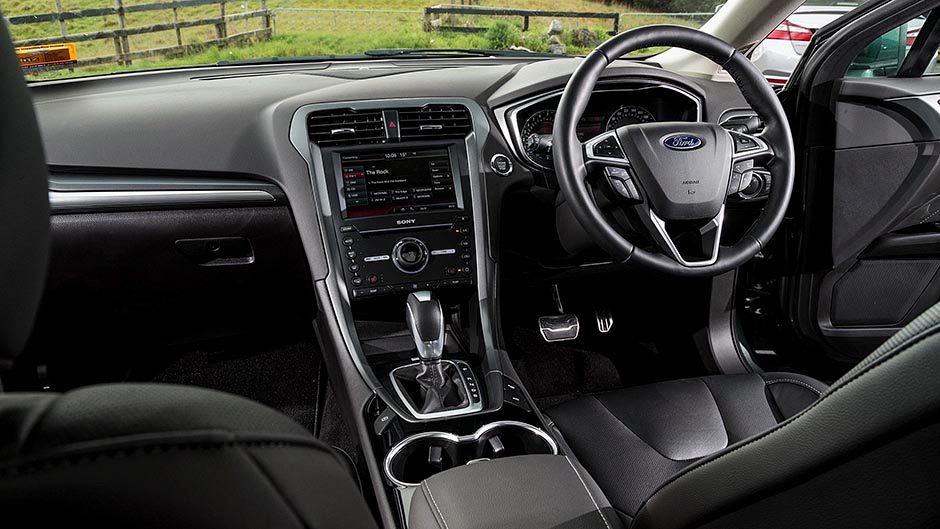
Big on space and safety
These are large cars and bring a swag of space and comfort. Up front, the Accord is the La-Z-Boy of the two, the seat soft and wide, the ride and progress more relaxed. Its cabin is airy, and feels wider than Mondeo’s, with more space in the footwell. Your knee rests up against the console in Mondeo, and the driver’s seat isn’t as pampering. The Accord has a fraction more leg- and headroom in the rear, with better entry, and a softer seat. While the Accord has a sizeable boot, it’s dwarfed by Mondeo’s enormous hold; the liftback body style means there’s a heap of a space in the back, with far superior access. Flop the seats down and you get even more, while Accord offers a load-through space for longer items.
Neither interior packs much of a wow factor but Mondeo sports a more modern design whereas the Accord is better made with fewer hard plastics. Ford’s infotainment system is far superior to the Honda’s; the Accord’s dual screens don’t quite gel together with some functionality replicated on both screens while simple actions require too many buttons to be pressed. Thankfully one of the updates includes CarPlay and Android Auto compatibility, but there’s no excusing that old-fashioned foot-operated parking brake, a relic of cars destined mainly for the US of A.
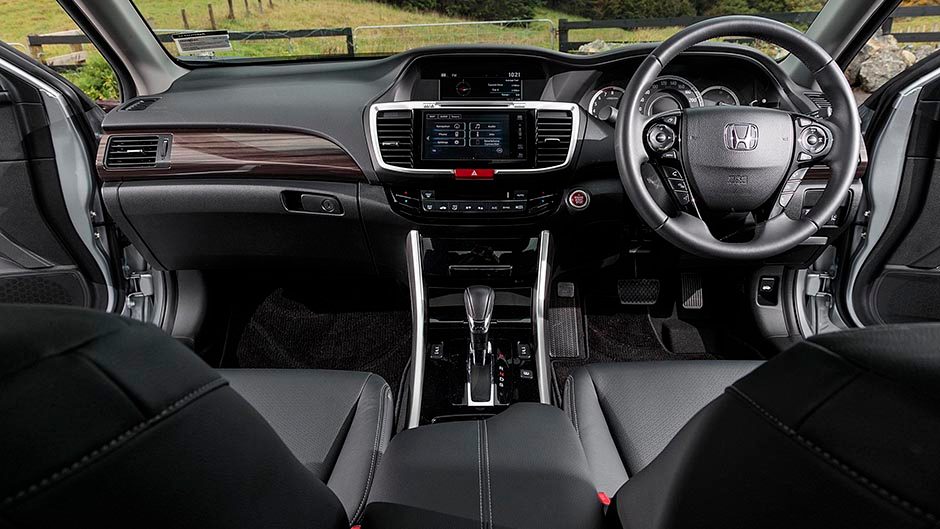
The automatic lane keeping features can feel slightly odd in action, like you’re wrestling for control of the car if you don’t realise they are activated. The Honda system is more proactive at keeping you centred in the lane, whereas the Ford set-up starts to make corrections as you begin to drift wide of the lane markings, but it isn’t as effective when those markings are sketchy. Lane departure warnings are generally annoying on New Zealand’s winding roads – it’s more of a feature for long, straight, bore-you-to-sleep roads. Active cruise and collision warning/mitigation systems are always good to have on your side however. Honda’s lane watch camera is actually quite helpful too, giving you a wider view on the central screen of what’s looming up the inside and it’s particularly good in the city for picking up cyclists.
Our choice?
Given the price advantage, extra specification, luggage space and handy dynamic advantage, it’s too hard to overlook Mondeo here. Accord though has its moments with its charming V6, big interior passenger space and general comforts that will appeal to certain buyers.
| Model | Ford Mondeo Titanium hatch | Price | $53,690 |
| Engine | 1999cc, IL4, T/DI, 177kW/345Nm | Drivetrain | 6-speed auto, front-wheel drive |
| Fuel Use | 8.5L/100km | C02 Output | 197g/km |
| 0-100km/h | 7.70sec | Weight | 1673kg |
| Model | Honda Accord V6 NT | Price | $60,000 |
| Engine | 3471cc, V6, EFI, 206kW/339Nm | Drivetrain | 6-speed auto, front-wheel drive |
| Fuel Use | 9.3L/100km | C02 Output | 217g/km |
| 0-100km/h | 6.54sec | Weight | 1669kg |


